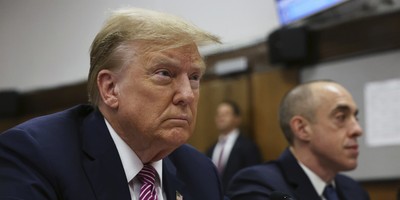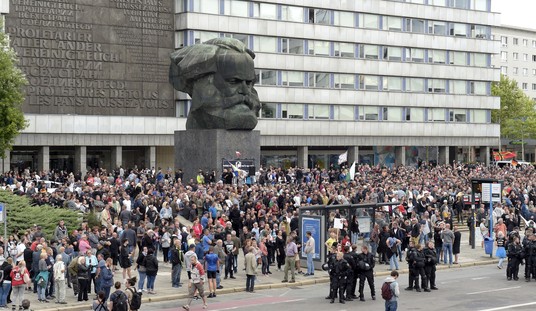“The most interesting aspect of the recent Wall Street coverage,” at least to Florence King, the grande dame and just plain grand old dame of America-watching, is the resurrection of the word Depression, which once upon a time no one dared utter. Euphemisms like correction, recession and downturn were favored instead. Now, she notes, the D-word is back in style, “wearing its de rigueur initial cap to differentiate it from mere sadness.” As an economic and historical term, Depression has the ring of a medical diagnosis. A fatal one.
With the slow fading of the Depression generation, along with knowledge of our own history, Americans toss around comparisons with the Depression with the abandonment of a broker jumping out of an upper-story window. To restore some perspective, as opposed to the manic-depressive shifts of the markets, it might help to look at the calendar and confirm that this is not the 1930s:
On July 9, 1932, the Dow Jones Industrial Average ended the day at 41.63 — a loss of 91 percent since the Year of the Crash, 1929.
In that same three-year period, banks had been shutting their doors all over the country. In 1929, a total of 659 banks with a combined capital of $250 million went under; in 1930, 1,352 banks worth $853 million; in 1931, 2,294 with aggregate deposits of close to $2 billion.
The railroads, then the country’s prime means of moving passengers and freight, ground to a halt, laying off workers by the hundreds of thousands, and letting equipment rust because there wasn’t money to replace it.
By the last quarter of 1930, industrial production was down by half of the previous year’s. The next year, 1931, industrial employment was down by more than a third. Wages, at least those that were still being paid, plummeted. By the time Franklin Roosevelt was inaugurated on March 4, 1933, one in four Americans was out of a job.
Whatever the country and the world is facing today, it’s not the capital-D Depression of the 1930s. Not that you’d know it by reading the current book of lamentations that suffices for so much economic analysis, but the country’s gross domestic product actually rose by 2.7 percent over the past five quarters, productivity is still on a roll thanks to ever leaping technological innovations, consumer loans outside the mortgage market are actually up 5 percent year over year, commercial loans 9 percent. To those with good credit, 30-year mortgage loans at 6 or 6 1/2 percent should be readily available.
Recommended
You call this a Depression? About the only thing this Panic of ’08 has in common with 1932 is a loss of faith. Once again the only thing we have to fear is fear itself — “nameless, unreasoning, unjustified terror which paralyzes needed efforts to convert retreat into advance,” to quote Franklin D. Roosevelt’s first inaugural address.
Throughout his first two terms, FDR did something even more important than acting: He appeared to act. If one policy didn’t work, he tried another. Much as this administration’s firm of Paulson and Bernanke are doing now. Barack Obama might describe such jumps back and forth as “erratic,” the way he does John McCain’s ever developing economic policies. But FDR, now one of the Democratic Party’s patron saints, believed in “bold experimentation,” which kept hope alive. And hope is the essence of credit.
Undeterred by attacks from the do-nothing right, which were balanced by separate but equally ferocious attacks from the do-everything left, the new president followed his own directionless course, swerving left and right like some agile bicyclist weaving through an impossible traffic tie-up, avoiding the crashes all around him, his only aim to keep his equilibrium and restore the country’s. In the end, FDR didn’t destroy the free market but saved it, which George W. Bush said this week was the object of his administration’s latest buy-out, this time of key banks.
Franklin Roosevelt was no intellectual, thank goodness. He was more interested in practice than theory. As a presidential aide once said of FDR, he may have had only a second-class intellect, but he had a first-class temperament. Adventuresome, inspiring, congenial, supremely confident, he was the ultimate Happy Warrior, a term he coined for Al Smith.
There’s a name for what FDR had and today’s doomsayers don’t: faith. Which is a curious lack in a country that has come through so much history, and will come through the Panic of ’08, too.

























Join the conversation as a VIP Member